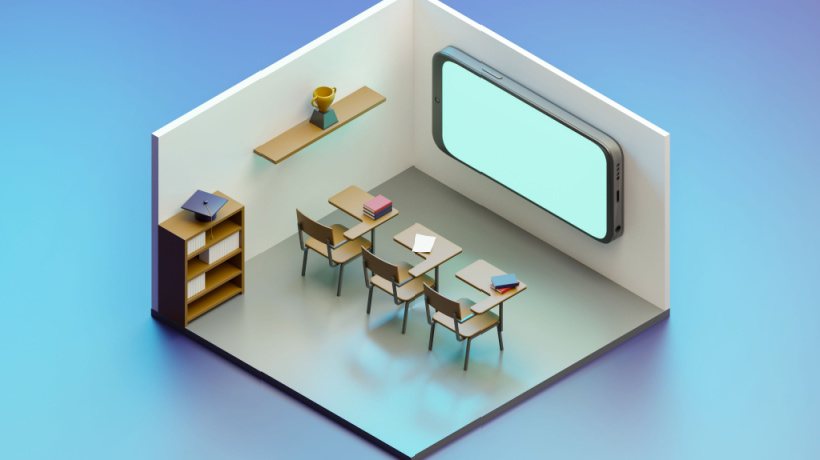What Can We Learn From The COVID-19 Pandemic?
Currently, we are experiencing the global COVID-19 pandemic, and educational systems worldwide face a gigantic crisis. Yet, the pandemic leaves no other option for students in higher education to do anything but online learning.
Introduction
The first COVID-19 case was reported in December 2019, but the world was not prepared for the massive disruptions it was going to cause. In 2020, the pandemic spread globally. The COVID-19 global pandemic led to the shutdown of many sectors, including higher education. As many nations started to close their borders and people went into lockdown, the education system started to take a new shape around the globe. Many nations closed their institutions to fight the spread of the COVID-19 outbreak. This is unprecedented; the world has never seen this many students out of learning institutions at the same time. Higher education around the world was closed for a prolonged period of time, and online learning became the mode of instruction for most educators.
The learning process in higher education around the world was suspended to curb the spread of COVID-19. In situations where students were not allowed to go to their higher education institutions, the learning methods moved from traditional classrooms to online learning. For example, China, the country most affected by COVID-19, has actively encouraged online learning for students to learn from home. Meanwhile, Hong Kong has been progressing steadily in online learning as teachers, parents, and students have begun to adapt to new technology. During these hard times, higher education gets support from large companies such as Microsoft, Google, and Zoom, which offer many of their feature products for free (Basilaia & Kvavadz, 2020). The number of users of Microsoft teams was only 750 on March 10, 2020, but hiked up to 138,698 on March 24, 2020, which showed significant growth (OECD, 2020).
The COVID-19 pandemic is giving technology to be further explored, especially online learning, allowing it to potentially shift from just content dissemination to augmenting relationships with educators, personalization, and independence. Online learning is expected to transform the current education system worldwide as a paradigm shift that could reshape education long after the COVID-19 pandemic is over (The Globe Mail, 2020). In addition, UNESCO created the Global Education Coalition as a collaboration between companies, non-profit organizations, and media corporations to help more than 1.5 billion students worldwide with online learning during the COVID-19 pandemic.
Online Learning Challenges
Educators do support online learning as an initiative to support students learning from home during the COVID-19 outbreak. Educators are trying their best to ensure the learning process continues despite the pandemic. However, educators face challenges in conducting their online classes successfully.
One of the most difficult challenges is the level of preparedness of higher education in handling online learning during the pandemic and the closure of higher education. Poorly managed online learning coupled with underprivileged students with a lack of devices or internet access has reflected how higher education responds to learners’ needs and its inability to engage in an online learning environment (Zhong, 2020).
Another challenge that stems from online learning is the quality of education provided during the pandemic. The decision of higher education to move toward online learning raised questions on the education quality due to limited or inadequate access to technology (Anderson, 2020). Past research indicated that students from the underprivileged category struggle to participate in their online courses and achieve positive learning outcomes (Barshay, 2019).
Another challenge is related to the success of online learning delivery. Most higher education institutions turned to alternative forms of learning, while some have temporarily halted learning to design and transition to online learning. Others have decided to continue face-to-face learning with supplement online resources such as recorded lectures while still following the needed social-distancing guidelines. In this sense, educators in higher education are facing difficulties in engaging students in online learning and getting their attention as in a regular face-to-face classroom. In addition, not all higher education possesses the necessary resources or the academic capabilities to make the transition from traditional learning to online learning (Leung & Sharma, 2020).
Opportunity To Improve
Some studies stated that prolonged higher education closures and home confinement might have negative effects on student’s physical and mental health (Brazendale, et al., 2017). The “psychological impact of quarantine is wide-ranging, substantial and can be long-lasting (Brooks, 2020)." The COVID-19 pandemic has given a lesson that may pave the way for new solutions for the existing education system where countries, educators, students, and parents will be more prepared than today.
The pandemic gave ways for educators to re-arrange exams and home assignments, which is more like the open book principle. The open book principle is not popular at the moment for students studying in schools. Educators need to rethink to provide new assignments for subjects that need additional work. While grading assignments, educators need to consider cheating or plagiarism. The current situation is just to keep the learning going in any possible format.
This is the best time to look into online learning methods to be incorporated into current traditional learning. As stressed by Zapalska (2006), a student who learns best in a particular way must be exposed to a variety of learning experiences to become a more flexible online learner. According to Basilaia and Kvavadze (2020), the system and skills gained by the educators, students, and administrations during the pandemic can be used in the post-pandemic period in case of missing lessons or other similar special cases like the current one. Educators have "re-realized" distance learning in a new way, and they have adapted the assignments to the new format of the lessons that will be positively reflected on their qualifications (Basilaia & Kvavadze, 2020). Online learning can be quite useful especially in the post-pandemic phase to educate students with special needs. Thus, post-pandemic is the time when education could comprise face-to-face education, blended education, and online education (Zhu, 2020).
Conclusion
COVID-19 has given a great lesson to all including how and where to run higher education lessons. The disruptions caused by this pandemic to education may become an eye-opener for the education system and for educators to think of online learning as another teaching tool rather than a burden. In addition, educators can rethink changing teaching methods in order to prepare students for the future and to face the current Industrial Revolution 4.0. Thus, more research is required to get a wider view of how the COVID-19 pandemic is going to change the learning process in higher education worldwide.
Sources:
- Anderson, G., 2020. “Students say online classes aren’t what they paid for.”
- Alturise, F., 2020. “Evaluation of the Blackboard Learn Learning Management System for Full Online Courses in Western Branch Colleges of Qassim University”. International Journal of Emerging Technologies in Learning, 15(15), 33-50.
- Barshay, J., 2019. “Weakest students more likely to take online college classes but do worse in them”
- Basilaia, G., and Kvavadze, D., 2020. “Transition to Online Education in Schools during a SARS-CoV-2 Coronavirus (COVID-19) Pandemic in Georgia.” Pedagogical Research, 5(4)
- Brazendale, K., et al.,2017, “Understanding differences between summer vs. school obesogenic behaviors of children: The structured days' hypothesis’, International Journal of Behavioral Nutrition and Physical Activity, 14.
- Brooks, S. K., Webster, R. K., Smith, L. E., Woodland, L., Wessely, S., Greenberg, N., & Rubin, G.J., 2020. “The psychological impact of quarantine and how to reduce it: rapid review of the evidence”. The Lancet.
- Leung, M., & Sharma, Y. (2020). Online classes try to fill education gap during epidemic.
- Mahyoob, M., 2020. “Challenges of e-Learning during the COVID-19 Pandemic Experienced by EFL Learners”. Arab World English Journal, 11 (4) 351-362.
- OECD., 2020. “A framework to guide an education response to the COVID-19 Pandemic of 2020”.
- Zhong, R., 2020. “The coronavirus exposes education’s digital divide”.
- Zhu, X., 2020.” Building up National Online Teacher Education System”. Research in Education Development, 40(2), 3.








